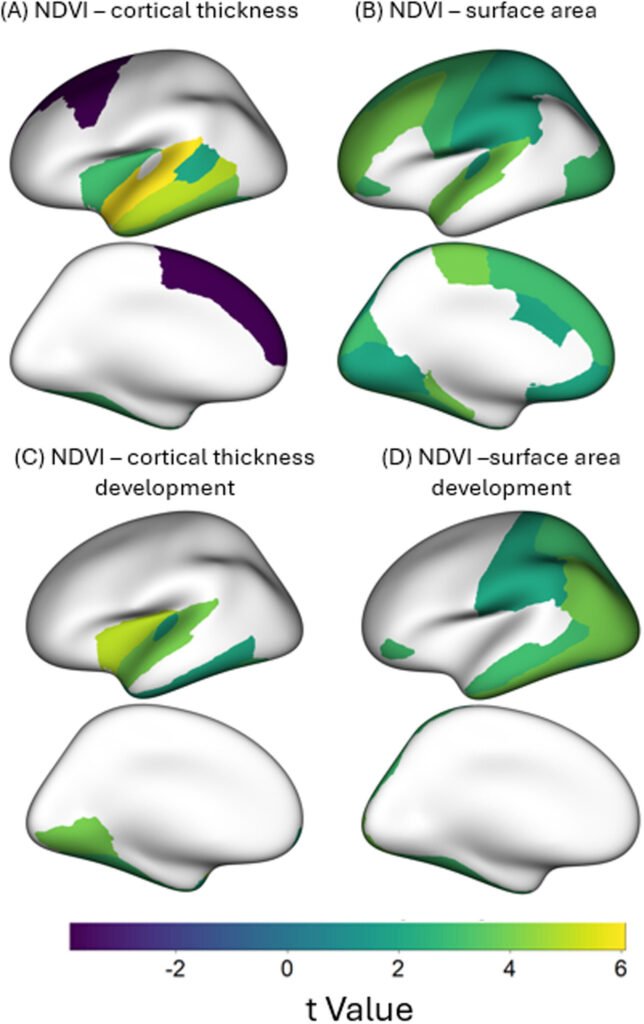Green Space Exposure Linked to Positive Brain Development in Adolescents
A recent study published in Biological Psychiatry has shed light on the beneficial effects of green space exposure on structural brain development in early adolescence. The research findings highlight the importance of integrating natural environments into urban and educational settings to support adolescent well-being.
Previous studies have already established a positive correlation between green space exposure and mental health and cognition. However, the underlying neurobiological mechanisms of brain development and their impact on children’s well-being remain poorly understood.
This groundbreaking study is the first of its kind to examine how green space exposure influences structural neurodevelopmental trajectories and whether these trajectories mediate the relationship between green space exposure and positive academic or mental health outcomes.
Dr. John Krystal, Editor of Biological Psychiatry, emphasized the significance of focusing on the positive effects of green spaces on human thriving and resilience, alongside the negative aspects of the environment.
Researchers analyzed data from over 7,000 ethnically diverse adolescents participating in the Adolescent Brain Cognitive Development (ABCD) study across the United States. They found that green space exposure at ages 9-10 was associated with changes in brain structure two years later and over time. These changes in brain structure were also linked to improved mental health and academic performance.
Co-lead investigator Qingyang Li from King’s College London noted that green space exposure was associated with changes in total surface area, cortical volume, and cortical thickness across various brain regions. These structural changes in the brain were found to mediate the positive effects of green space exposure on academic and mental outcomes, independent of household and neighborhood factors.
The study also highlighted the critical role of green spaces in urban environments, especially as the global population becomes increasingly urbanized. By 2050, nearly 68% of the world’s population is projected to live in cities, limiting access to natural environments and green spaces.
Co-lead investigator Dr. Divyangana Rakesh emphasized the importance of integrating green spaces into urban planning and school settings to address the growing mental health challenges faced by children and adolescents.
In conclusion, the study provides valuable insights for policymakers, parents, and educators on the benefits of green space exposure for brain development and overall well-being in early adolescence. By incorporating green spaces into urban environments and educational settings, we can create healthier and more supportive environments for the next generation.


